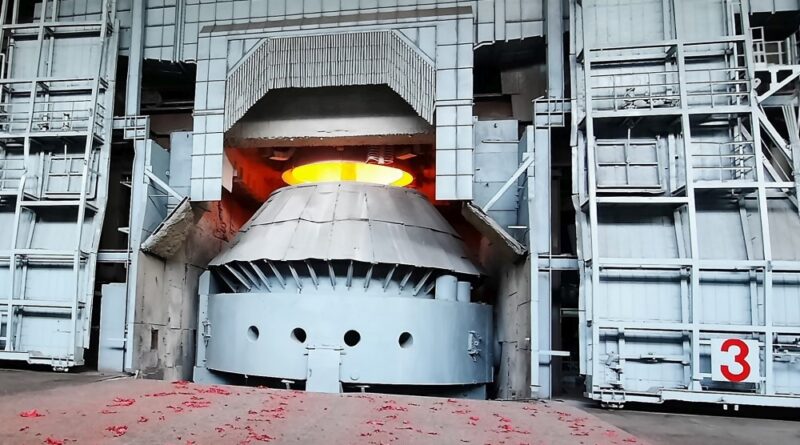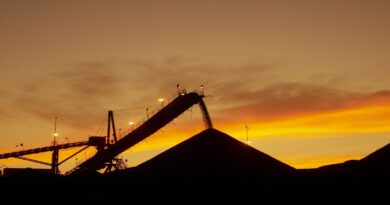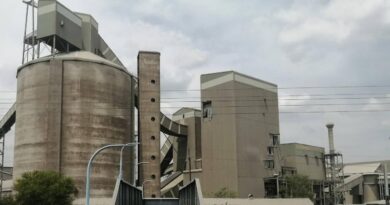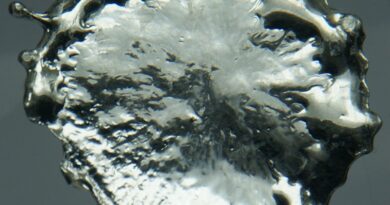ArcelorMittal SA reports strongest annual earnings since 2008
Despite the volatility from the ongoing presence and repercussions of Covid-19 and its various variants, 2021 was an exceptionally strong year for ArcelorMittal South Africa. The Company’s annual results were supported by a continuing strong price environment, higher sales volumes, and the benefit of robust price-cost effects, all resulting in the highest yearly EBITDA (R8 569 million) and headline earnings (R6 860 million) since 2008.
Acceleration of free cash flow generation, from the first half of the financial year’s R985 million to the full year’s R1 961 million, resulting in a reduction of net borrowings by R2 366 million to R1 258 million, against R3 624 million at 31 December 2020. The free cash flow performance was after the R2 724 million reduction in a significant payable with extended credit terms. This represents meaningful progress against one of the key strategic pillars of the business, namely, to improve financial resilience by operating on a net cash funding basis.
The Business Transformation Programme (BTP) contributed a further R2 085 million (2020: R1 543 million) in improvements, bringing the cumulative benefit achieved since the programme started in the second half of 2018 to R5,6 billion.
These results were far from effortless, and were achieved through the significant commitment and efforts of the Company’s employees and service providers as several difficulties were traversed and responded to throughout the year, most notably:
- a painful, disappointing and unacceptable safety performance
- ramping-up of production and restoring stability after the o restart of operations in late 2020 and early 2021; and interruptions due to the safety incidents
- adverse impact of the civil unrest in July 2021
- spill-over effects of last October’s paralysing labour strike in the downstream industry, which necessitated the rebalancing of dispatches to export markets
- unreliable electricity supply at both the generator and, particularly, at local municipal distribution levels
- an ever-worsening rail logistics service aggravated by significant fire damage at Transnet’s Richard Bay’s facility
- managing through the extreme volatility in international coking coal prices in the second half of 2021.
The global steel environment for 2021 was characterised by overall positive yet differing dynamics when comparing the two halves of the year. The first half of the year saw strong demand recovery due to low supply chain inventories and a strong recovery in steel spreads (i.e., the difference between steel prices and raw material costs). It was during the first half of the year that China reduced the incentive to export steel by cancelling the export rebates on VAT.
Given the scale of the China steel industry and the size of its exports, this represented a material change to the medium‐term prospects of the global ex‐China steel industry. The second half of the year saw still-positive demand, though with steel prices off record highs. Falling iron ore and volatile coking coal prices were also experienced in response to easing supply constraints among exporters, and notable economic interventions evident in China.
Regarding fair trade policy, ArcelorMittal South Africa continues to support actions which target unfair trade practices in the jurisdictions in which it operates and trades. 2021 proved to be a particularly active year as globally the unfair practices, which initially provided protection, remained prevalent. A very real risk exists of those unfair practices intensifying as supply constraints ease and markets normalise in time.
Within Europe, at least seven new or review investigations were launched, and new or extended protection measures implemented, targeting mainly hot rolled coil, galvanised sheet and wire rod from China, Russia and Turkey.
In the US, Section 232 continues to apply a 25% tariff on all steel product categories from most countries, though, from 1 January 2022, it will replace the existing tariffs on EU steel with a tariff-rate quota on a product category and EU member state basis. Imports above the permitted volumes will continue to be subjected to the 25% tariff.
The average international dollar steel prices increased by 91%, with iron ore by 48%, coking coal by 82%, and scrap by 68%. Turning to South Africa and the regional economy, consensus GDP growth forecasts for South Africa are around 4,6% for 2021, and those for near- and Sub-Saharan Africa markets between 3.0% and 3.3%.
Steel inventory levels have largely returned to normal, while business conditions in South Africa, particularly in the second half of 2021, proved to be more challenging than initially anticipated. This was due to the negative impact on sentiment of events such as the civil unrest in July, labour disputes in the downstream sector, continuing electricity load-shedding, municipal distribution network failures, and lockdown uncertainty.
In contrast, the anticipation of impactful progress on the renewable electricity build programme, private sector’s potential involvement in rail and port logistics, the advancing of the next tranche of “shovel ready” projects within the Infrastructure Investment Programme, and positive spin-offs for growth from the upcoming band spectrum auction, serve as a basis for some optimism.
Diversifying the sourcing of strategic raw materials continued to yield significant though hard-won benefits, as best illustrated during times of extreme price volatility. Disposal of Coza Mining and the consequential offtake agreement reached financial closure during the last quarter of 2021. The second phase of the Thabazimbi iron ore beneficiation project is scheduled to begin in the first half of 2022.
As reported in July, the Company took a very conscious though responsible and well-considered decision to invest in certain key fixed cost areas. This was extended to also encompass targeted capital investment, both incurred in 2021 and allocated for 2022.
This additional fixed cost and capital investment is directed at improving reliability and quality, further enhancing environmental compliance, and targeting growth opportunities. A return to stable, reliable production is key to the Company’s commitment to improving its customer service experience after a difficult 2020 and early-2021.
Additional fixed cost, amounting to R2 362 million, was largely attributed to higher activity levels, additional investment in maintenance to improve reliability and quality, and supplementary temporary staff for pandemic risk mitigation purposes.
With varying degrees of global supply chain seizures, and the impact of government stimulus packages being progressively felt in the real economy, expectedly, inflation has made an unwelcome return, with the prospect of a tighter fiscal and monetary environment into 2022. Aggravated by the high electricity and logistics cost in South Africa, improving ArcelorMittal South Africa’s position on the global cost curve while bettering its product offering to customers, will be critical to the next phase of its Transforming for Sustainable Growth strategy, as best expressed through the strategic pillars: reposition, restructure and resilience.
For 2022, the BTP will advance to the more ambitious and more encompassing multi-year Value Plan Programme (VPP), targeting:
- greater integration between suppliers and customers to improve the overall efficiency of the supply and value chains, including integration and consolidation opportunities
- improving the product and value offering to customers
- adopting a more agile and variabilised fixed cost structure
- pursuing alternatives to counter unsustainable cost inflation of both rail and electricity, which is limiting volume recovery and risking growth aspirations
- implementing the decarbonisation roadmap which is being finalised for formal announcement later in 2022.




